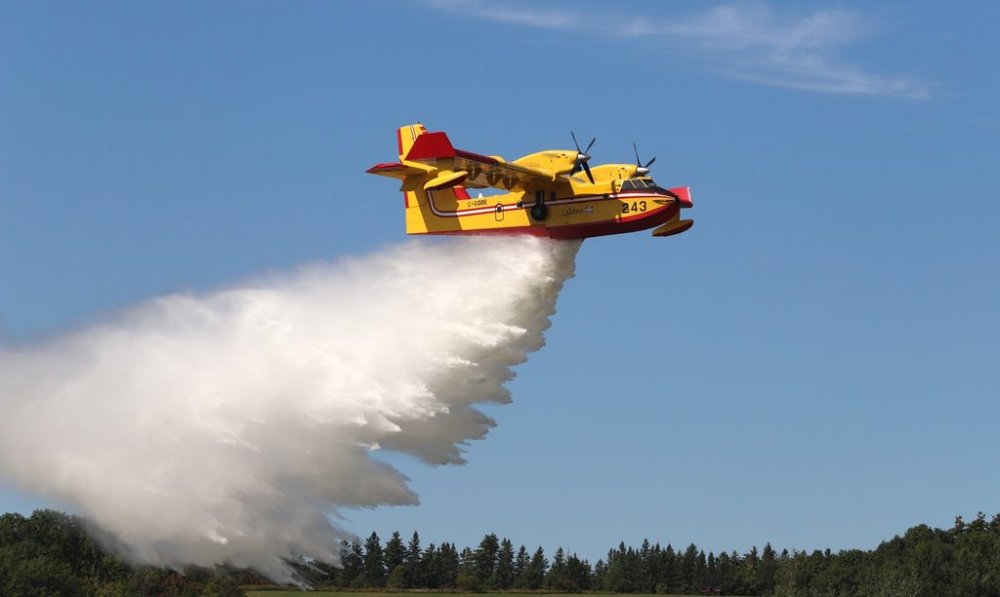Canada needs more water bombers — fast
Advertisement
Read this article for free:
or
Already have an account? Log in here »
We need your support!
Local journalism needs your support!
As we navigate through unprecedented times, our journalists are working harder than ever to bring you the latest local updates to keep you safe and informed.
Now, more than ever, we need your support.
Starting at $15.99 plus taxes every four weeks you can access your Brandon Sun online and full access to all content as it appears on our website.
Subscribe Nowor call circulation directly at (204) 727-0527.
Your pledge helps to ensure we provide the news that matters most to your community!
To continue reading, please subscribe:
Add Brandon Sun access to your Free Press subscription for only an additional
$1 for the first 4 weeks*
*Your next subscription payment will increase by $1.00 and you will be charged $20.00 plus GST for four weeks. After four weeks, your payment will increase to $24.00 plus GST every four weeks.
Read unlimited articles for free today:
or
Already have an account? Log in here »
On Monday, wildfires were trending high on news sites across Canada.
Two out-of-control forest fires causing evacuations in New Brunswick, at least as many in Newfoundland and Labrador.
Open the FIRMS Fire Information for Resource Management System, and Northern Ontario, Northern Manitoba, Saskatchewan and Alberta are a patchwork quilt of the bright red squares indicating fire action, with significant numbers of fires in Yukon, the Northwest Territories and British Columbia as well.

The fire map — which shows active fires based on temperature anomalies detected by satellite — also shows a patchwork of fires across the western United States.
Right now, you can make the case that the size and number of fires is more than putting a strain on forest fire-fighting resources, particularly on water bombers. And water bombers are hard to find right now.
Manitoba, for example, has three next-generation DHC-515 water bombers on order — an $80-million order that’s unlikely to be fulfilled until 2031 and 2032. Ontario has six of the aircraft on order, and also expects at least a four- year delay.
There are a couple of reasons for that.
For one, the traditional producer of Canadian-built water bombers, Bombardier, sold its water-bomber production rights to De Havilland Canada in 2016, and De Havilland has built a Calgary production facility that has gone into production of the newest variant of the aircraft.
But that’s taken time.
Plus, European governments have shown huge demand for the aircraft, and have 22 of the aircraft on order already, ahead of Canadian customers like Manitoba.
In past years, there hasn’t been quite as much pressure on water-bomber fleets and other forest-firefighting equipment.
Canadian provinces have been able to juggle their firefighting resources and share them across the country when needed — often because large fires were not as common as they are now.
That changed in 2023, when 15 million hectares of forest lands burned in over 6,000 wildfires — 29 of them megafires burning more than 100,000 hectares. That was more than double the previous record for fires set in 1989.
This year, Canada’s experiencing yet another fire year that’s well above the average of 2.5 million hectares burned annually. As of Aug. 15, 7.5 million hectares had burned in Canada.
As of Friday, at least four active fires were in the mega-fire range, including the Lower Fish Lake fire in Saskatchewan, which by itself has now burned a whopping 565,701 hectares of land. About 70 major forest fires are out of control. All of this is to say that we’re well past the time when we’ve had enough pieces to move around the fire chess board successfully.
Canada does have a federal not-for-profit agency, the Canadian Interagency Forest Fire Centre, co-ordinating federal and international response to the ever-growing demands for forest-firefighting expertise.
But there also has to be equipment and personnel at the ready to respond quickly and effectively to forest fires when they’re starting, not once they’re well-entrenched and burning across large areas.
And that means government investment.
A start?
Maybe one of Prime Minister Mark Carney’s “nation-building projects” could include building a national water-bomber fleet — including crews — that could be moved as needed to provinces and territories across the country. And maybe that same project could find a way to help De Havilland Canada build its workhorse water bombers even more quickly.
After all, five years of forest fires at the rate we’re having them now, at the size they now are, and at the speed they now grow in changed-climate dry conditions is just too long to wait.
» Winnipeg Free Press
